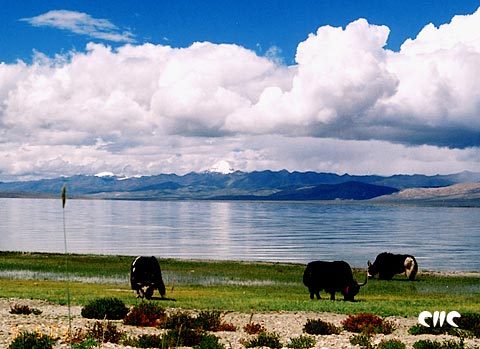The average temperature in southwest China's Tibet Autonomous Region last year was the second-highest in 37 years and meteorologists said that this underscored the impact of global warming.

The Qinghai-Tibet Plateau
The average temperature last year, which was calculated at 4.7 degrees Celsius (about 11.6 degrees Fahrenheit), was only second to the record of 4.9 degrees Celsius in 2006, according to statistics released by the Tibet Regional Meteorological Bureau on Thursday.
The 2007 figure was 1.2 degrees higher than the previous yearly average, it said.
Statisticians with the bureau said that temperatures set record highs in several areas and in several months. In October, record highs were recorded at more than two-thirds of the monitoring stations in the region.
Zhang Hezhen, a senior engineer with the bureau, said that since 2000, warm winters had been more frequent. Five of the warmest winters in the past 35 years in Tibet occurred after 2000.
The Tibet region, home to the Qinghai-Tibet Plateau, has been regarded as a barometer for the world's climate. Experts said that the temperature rise in Tibet was a microcosm of the global warming trend.
A study by the bureau showed that the temperature in Tibet had risen by 0.3 degrees Celsius every 10 years, or about 10 times as fast as the national average, which is 0.4 degrees per century.
Sun Honglie, an academician with the Chinese Academy of Sciences, said that melting glaciers and frozen ground could mean more plants during warmer weather, but that in the long term, accumulated snow-water would mean the risk of floods and inundated grassland.
Some researchers have already expressed concern over the impact of global warming.
"The warming climate has caused more meteorological disasters than ever in Tibet. Problems like receding snow lines, shrinking glaciers, drying grasslands and desert expansion are increasingly threatening the natural eco-system in the region," said Song Shanyun, director of the Tibetan meteorological bureau, in an interview last November.
"Natural disasters, like droughts, landslides, snowstorms and fires are more frequent and calamitous now. The tolls are more severe and losses are bigger," he said.
Song cited two major disasters in 2000 alone, which caused total losses of 1.4 billion yuan (about US$195 million).
In April 2000, a thawed snow cap triggered what experts described as a "rare and extremely large-scale" landslide in Nyingchi prefecture in southeast Tibet. More than 300 million cubic meters of debris, piling up to 100 meters high, blocked a river and trapped more than 4,000 people.
The other disaster was in Xigaze, a city in southern Tibet, in August, when a flood of the size that usually occurs only once in a century affected more than 60,000 people and inundated thousands of hectares of cropland.
(Xinhua News Agency February 29, 2008)